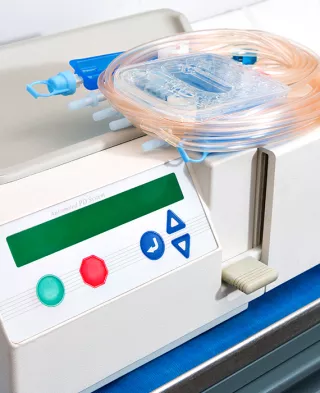
Dialysis Treatment Options
Dialysis Treatment Options
Dialysis is a treatment that removes excess fluid and waste from your body when your own kidneys aren’t able to do their job effectively. In the last stage of chronic kidney disease, your kidneys have lost about 85% to 90% of their function. People who develop end-stage kidney failure need dialysis or kidney transplantation to live.
FAQs About Hemodialysis
Where is hemodialysis done?
Dialysis can be done
- In a hospital
- In a dialysis center
- In other medical facilities
- At home
You and your doctor will decide which place is best, based on your medical condition and your wishes.
How much time do hemodialysis treatments take?
At a dialysis center, hemodialysis is typically done 3 times per week. Each treatment lasts about 3 to 5 hours.
At home, people do their hemodialysis treatments about 4 to 7 days per week. Each treatment lasts about 3 to 4 hours.
Is it possible to no longer need dialysis?
If your kidney disease was caused by sudden or acute kidney injury, you may need dialysis for only a short time until your kidneys get better.
Patients who receive a kidney transplant no longer need dialysis for as long as their new kidney is working effectively.
Do I need a special diet?
People on hemodialysis typically need to eat more protein and limit potassium, phosphorous, sodium, and fluid in their diet. People who have diabetes or high blood pressure may need other changes to their diet as well. Be sure to talk to your dietician or provider about the type of diet you need.
Is home dialysis better?
Some research suggests that home dialysis is linked to
- Better results and health outcome because dialysis is done more often
- Improvement in some of the symptoms that dialysis patients often have, such as cramping, nausea, trouble sleeping, and loss of energy
- Better quality of life and ability to keep doing many of your normal activities
How peritoneal dialysis works
PD is carried out through a catheter placed in the peritoneum, which is located in your abdomen. This is where you exchange old solution for new solution. The 3 main steps in fluid exchange for PD are drain, fill, and dwell.
Hemodialysis vs Peritoneal Dialysis Comparison
You doctor will help you decide what type of dialysis is best for you. Here is a comparison of what is involved with each dialysis option.
